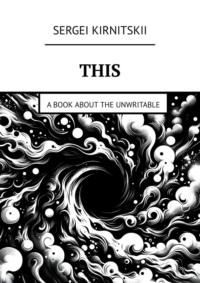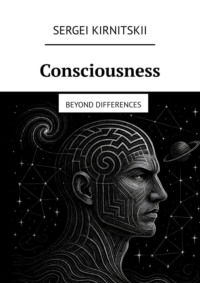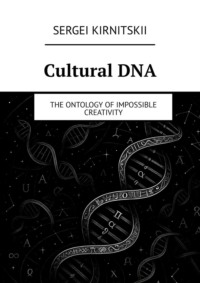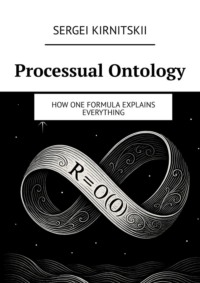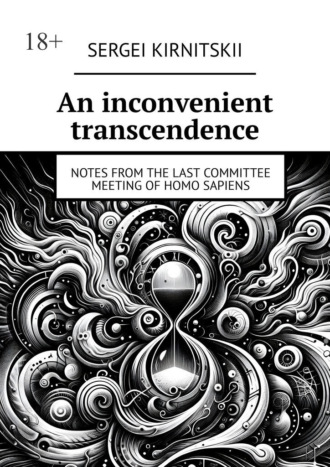
Полная версия
An inconvenient transcendence. Notes from the Last Committee Meeting of Homo Sapiens
History: «Hold my beer.»
The subsequent 30 years delivered: – The Internet (minor adjustment to how civilisation operates) – 9/11 (turns out history hadn’t ended) – 2008 Financial Crisis (capitalism also non-eternal) – Arab Spring (democracy via Twitter) – Brexit (even Britain doesn’t believe in eternal unions) – Pandemic (Nature: «I haven’t had my say yet») – AI (Humanity: «Let’s build our replacement»)
And those are just the major plot twists. Not counting minor details like cryptocurrency, social media, climate change, and the fact that any teenager with a phone can become globally famous by dancing badly for 15 seconds.
The mechanism is simple: the brain cannot imagine its own absence. Like trying to imagine before you were born. Not «you didn’t exist» – nothing existed. Impossible, isn’t it?
Same with civilisation. We can’t imagine a world without us, so we declare the current moment final. «Now we’ve reached the ideal!»
Every generation thinks the same: – «Now everything’s settled» – «The major discoveries are done» – «Only improvements from here» – «We’re living at the end of history» (but in a good way)
Picture a Neanderthal who’s just mastered fire: «Right lads, we’ve peaked. From here it’s just fire maintenance. History’s over!» Meanwhile, somewhere wheat is evolving to domesticate humans (yes, in that order).
The «Last Normal Year» Phenomenon
Ask anyone when the last normal year was, and the answer’s always identical: 10—15 years ago. Always. It’s a constant.
In 2024: «2010 was the last normal year» In 2010: «1995 was the last normal year»
In 1995: «1980 was the last normal year» In 1980: «1965 was the last normal year»
And so on until infinity. Or the beginning of time. Whichever comes first.
This isn’t nostalgia. It’s a psychological defence mechanism. We remember the past as stable because it already happened. No uncertainty. But the present is always chaotic, always changing, always uncomfortable.
Nostalgia for the «Golden Age» That Never Was
«Things were better before!» – the universal cry of the human soul. Before when? When there were no antibiotics? When child mortality was 50%? When people worked 16-hour days? When wrong opinions earned you a starring role at a bonfire?
Ah, you mean cultural «before». When music was music, books were books, and people were people. I see. Small problem: that «before» never existed.
In the 1920s they complained jazz was destroying morality. In the 1950s – rock and roll was corrupting youth. In the 1980s – video games were making children violent. In the 2000s – the internet was killing real conversation. In the 2020s – TikTok is destroying attention spans.
Somewhere in a cave 40,000 years ago: «These youngsters with their cave paintings! In my day we just grunted and everyone understood!»
1.4. The Comedy of Self-Deception
«This is different!» – the universal response to any historical parallel. Rome fell? Different, they didn’t have nuclear weapons. USSR collapsed? Different, they had a planned economy. Social networks dying? Different, we have… the metaverse?
We’re professional experts at explaining why our case is unique. Why all previous civilisations/empires/companies/ideas were doomed, but ours isn’t.
Collection of «Last» Predictions:
«The last war» – they said about WWI. Even called it «the war to end all wars». History appreciated the irony and arranged a sequel within 20 years.
«The last financial crisis» – said after every crisis. 1929, 1987, 2001, 2008… Each time they find culprits, introduce regulations, swear it won’t happen again. Spoiler: it will.
«The last pandemic» – COVID-19 will teach us, we’ll create systems, we’ll be ready… Sure. In 50 years our grandchildren will be isolating from COVID-69, wondering how we could be so naive.
«Last» is like «final version» of a document. Final_final_FINAL_version_2_ACTUALLY_LAST_promise.docx
The Belief in Our Era’s Uniqueness
We genuinely believe we live in special times. That right now something unprecedented is happening. Something that’s never been before.
Spoiler: it has. Everything’s been done. Just with different props.
– «The information revolution is unprecedented!» – they said the same about the printing press.
– «Globalisation changed everything!» – Roman Empire and Silk Road have entered the chat.
– «Change is happening too fast!» – complained during the Industrial Revolution.
– «Young people these days!» – Socrates, 2400 years ago.
«It Was Different Before» (Spoiler: It Wasn’t)
People were kinder before? Read more? Communicated more genuinely? Seriously?
Before, people: – Attended public executions as entertainment – Considered owning other humans perfectly normal – Burned «witches» (spoiler: they were just women) – Died from diseases now cured by a single pill – Went to war over whose imaginary friend was more correct
But yes, of course, things were better before. Especially if you were a white upper-class male. For everyone else – not brilliant.
The Punchline: We’re Also «Before» for Someone
And here’s the proper kicker. In 50 years, someone will wax nostalgic about 2024. «Ah, those were golden times! People still drove their own cars! Made their own decisions! Had privacy! Could disconnect from the network!»
And their children will stare in bewilderment: «You drove cars yourselves? But that’s dangerous! Made your own decisions? But that’s inefficient! Had privacy? But what about security? Disconnected from the network? But… why??»
We’re living in the «good old days» of our great-grandchildren. Think about that next time you spend an hour choosing what to watch on Netflix. Someday they’ll reminisce about this: «Ah, when people had choice!»
Bridge to Chapter 2: The Plan as an Attempt to Stop the River
But if every era’s wrong about its finality, perhaps we should do something about it? If we’re clever enough to spot the pattern, maybe we’re clever enough to break it?
Enter Gary Seldon with The Plan.
A mathematician who decided that if history repeats, it can be calculated. If it can be calculated, it can be controlled. If it can be controlled, it can be preserved.
Noble. Heroic. Doomed.
Because there’s a fundamental problem with trying to preserve what must change. It’s like trying to stop a river by building a dam. Works for a while. Water accumulates. Pressure builds. And then…
And then you don’t get a controlled flow. You get catastrophic flooding.
Seldon’s Plan is the perfect metaphor for human hubris – the belief that sufficiently complex mathematics can tame life’s chaos. That a sufficiently clever plan can cancel the inevitability of change. That if we’re careful enough, prudent enough, clever enough – we can preserve the status quo forever.
The Plan’s story is about how the best intentions pave the road to… well, you know where. Only in this case it’s not hell. It’s transcendence. Which, for some, might be the same thing.
But that’s for the next chapter. For now, let’s have another laugh at that 1899 Patent Office Commissioner. Everything’s been invented! Delightful. Wonder what he’d make of smartphones, the internet, and neural networks?
Though given our talent for adapting to absurdity, he’d probably say: «Well yes, logical evolution of the telegraph. Nothing fundamentally new.»
And he’d be right, in his way. Because the finality syndrome isn’t stupidity. It’s a defence mechanism. The psyche’s way of coping with the vertiginous abyss of constant change.
We can’t live in permanent awareness that everything’s temporary. That everything will change. That we ourselves won’t exist. So we say: «Right, that’s sorted then.»
And we carry on. Make plans. Build careers. Save for retirement. Raise children for a world that won’t exist by the time they’re grown.
It’s simultaneously tragic and comic. But mostly comic. Because the alternative is going mad from existential terror.
And we choose to laugh.
Chapter 2. Theatre of Salvation
Picture this: you’ve mathematically calculated that in 500 years, humanity will degrade to the level of reality television. And you’ve decided to prevent this. Congratulations, you’re Hari Seldon, and you have catastrophically misunderstood the nature of progress.
Though honestly, we didn’t wait 500 years. Reality TV arrived much sooner. And yes, we did degrade. But it turns out this wasn’t a bug – it was a feature. Preparation for transformation requires a certain baseline of absurdity. And judging by the millions watching other people sleep in houses festooned with cameras, we’re magnificently ready.
2.1. Anatomy of the Plan (For Those Who Skipped Asimov)
Let’s start with the fundamentals. Hari Seldon – fictional mathematician from Isaac Asimov’s Foundation series. Imagine a man who looked at a galactic empire of a trillion souls and declared: «I can calculate this.» Not the fate of one person – too pedestrian. Not the destiny of a planet – amateur hour. The fate of all humanity for thousands of years hence.
It’s as if a meteorologist announced they could predict the weather for the next 10,000 years. To the degree. And just so you don’t doubt them, they’ll also tell you what colour the umbrellas will be.
Psychohistory: When You Think Humans Are Calculable
Seldon invented psychohistory – a mathematical science that predicts the behaviour of large masses of people. Key word: large. You can’t predict one person. But a trillion? Child’s play!
It’s like molecules of gas. Track one molecule? Impossible – careens about like it’s lost its mind. But a trillion molecules? Here are your laws of thermodynamics, sir. Temperature, pressure, volume – all delightfully predictable.
Seldon decided: humans are just molecules with delusions of grandeur. Get enough of them together, they’re as predictable as gas. Brilliant! Insulting! And most importantly – it almost works. Almost.
30,000 Years of Chaos Versus 1,000 Years on Schedule
So Seldon calculated the future and was properly horrified. The Galactic Empire would fall (shocking!), and humanity would plunge into barbarism for 30,000 years. Thirty. Thousand. Years. That’s longer than all of recorded human history. So long that by the end, nobody would remember there was a beginning.
But! Seldon found the solution. Create two Foundations at opposite ends of the galaxy, plan everything meticulously, channel history down the right path, and the dark age could be reduced to a mere 1,000 years. What savings! 29,000 years knocked off! Black Friday for psychohistory!
Imagine the advert: «Today only! Order Seldon’s Plan and get your civilisation 29,000 years early! Hurry, offer limited by the heat death of the universe!»
Two Foundations: Plan A and Plan B
First Foundation – the official one. Scientists preserving knowledge. Writing the Encyclopedia Galactica. Very important! Very serious! So serious it’s actually a cover story.
Second Foundation – the secret one. Telepathic mathematicians who nudge history back on track. When Plan A glitches, Plan B patches it invisibly. Like playing chess when you have an invisible hand moving your opponent’s pieces – possibly cheating, definitely effective, ethically dubious at best.
Genius? Undoubtedly. Ethical? Interesting question. Effective? Well…
Spoiler alert: Neither plan worked. The First Foundation became a technocratic empire. The Second became a club for know-it-all manipulators. And humanity? Humanity went its own way. As per bloody usual.
Mathematical Religion: Faith in Formulae
The most exquisite thing about Seldon’s Plan is the faith. Pure, undiluted faith that sufficiently complex mathematics can tame history’s chaos. Like believing a sufficiently accurate map can change the territory.
Seldon’s followers treated his equations like sacred texts. «Thus predicted Seldon!» became their «Amen». Crisis? Consult the Plan. War? The Plan foresaw it. Economic collapse? All part of the Plan!
It became a religion where mathematics was God, Seldon the prophet, and the holy scripture was equations nobody but the initiated understood. Perfect! Religion for technocrats! Theology you can graph!
The Irony: Saving Humanity’s Right to Cosmic Traffic Jams
But here’s what’s genuinely hilarious. What exactly was Seldon saving? The Galactic Empire. A galaxy-sized bureaucracy. Humanity’s right to have cosmic traffic jams, interstellar taxes, and galactic red tape.
Imagine: you spend your entire life creating a plan to save humanity. And what are you saving? The opportunity to queue at the cosmic vehicle licensing centre. The right to fill out forms for interstellar travel permits. The privilege of paying taxes in galactic credits.
Seldon wasn’t saving humanity. He was saving the status quo – just with better special effects. Blasters instead of pistols, hyperspace instead of motorways, but the same fundamental truth: preserving the system that created the crisis in the first place.
2.2. What Exactly Are We Saving?
Let’s take inventory. What are we so desperately trying to preserve? Which «eternal values» are we defending from change?
Power
Ah, power! The ability to tell others what to do. From tribal chief to corporate president – only the titles change. The essence remains: «I’m the boss, you’re the idiot.»
We’ve created thousands of power systems. Monarchies, democracies, autocracies, corporatocracies… Each convinced it’s the final answer. «NOW we’ve found the perfect system of governance!»
Spoiler: we haven’t. But we keep looking. As if the problem is the system, not the very idea that someone must manage someone else.
Property
Mine! Don’t touch! From the first club to the crypto wallet – evolution of ways to say «this belongs to me.»
We started with «this is my cave.» Reached «this is my data in the cloud.» Progress? Absolutely. But the essence unchanged: the illusion of ownership in a world where everything is temporary.
Imagine explaining intellectual property to a Neanderthal. «See, Ug, this sequence of sounds belongs to me. If you repeat it, you must pay.» Ug would assume you’d eaten the wrong mushrooms.
Hierarchies
Humans adore hierarchies. Who’s higher, who’s lower, who’s most important. From primate troops to boards of directors – only the number of bananas changes.
LinkedIn is the apotheosis of hierarchical absurdity. «Senior Vice President of Junior Management.» «Chief Executive Officer of Myself.» Titles grow longer, meaning shrinks proportionally.
Future prediction: «Galactic Ultra-Mega President of Matters of Negligible Importance.» And someone will put it on their business card with pride!
House-Car-Cottage, But in Space
Basic human dreams, scaled to absurdity. Once we dreamed of a house. Now, a house on Mars. Once, a fast horse. Now, a personal starship.
Elon Musk sells plots on Mars. People buy them! «When I retire, I’ll build a little place in Olympus Crater…» Same retirement dreams, just with radiation and atmospheric absence as bonus features.
«Great» Culture: Shakespeare to TikTok in 400 Years
Oh, our magnificent culture! What separates us from animals! What makes us human!
Shakespeare: «To be or not to be – that is the question.» TikTok: «Dancing in banana costume to viral song #ToBe #NotToBe #BananaChallenge»
400 years of evolution. From sonnets to Stories. From Romeo and Juliet to «swipe right if interested.» Progress is palpable!
Don’t misunderstand. TikTok is culture too. Just… different. As if Michelangelo had painted the Sistine Chapel’s ceiling in a shopping centre loo. Technically still art.
Institutions: From Sacred to Absurd in One Generation
Remember when banks were solid establishments with marble columns? Now they’re apps with cheerful logos. «Hi! I’m your bank! Let’s be friends! Want some stickers?»
Universities were temples of knowledge. Now they sell degrees online. «Get your MBA in 6 months! Without interrupting your Netflix binge!»
Marriage was a sacred union. Now it’s… still a union, but with the option to «divorce online in 15 minutes.» Convenient!
The Question: Was It Worth It?
Seriously. Look at this list. This is what Seldon spent his life for? This is what we’re desperately trying to preserve?
Imagine the dialogue: «What are you saving?» «Human civilisation!» «More specifically?» «Well… the right to pay mortgages for 30 years. The opportunity to sit in traffic. The privilege of scrolling feeds until 3 AM.» «…» «It’s important!»
2.3. The Control Paradox: The Mule as Symbol
Now for the truly delicious bit. In Asimov’s novels, Seldon’s Plan worked beautifully… until the Mule appeared. A telepathic mutant nobody predicted. One person – and all the mathematics went straight to hell.
The Only One Who Broke the Plan – Because He Was Alive
The Mule didn’t fit the equations. He was an anomaly. Psychohistory’s black swan. And you know what? He nearly destroyed both Foundations. Nearly rewrote all galactic history. One. Single. Person.
It’s as if you’d created the perfect train schedule for the next 1,000 years, then some eccentric decided to take a stroll on the tracks. And that’s it. Schedule’s binned.
The Mule embodies life’s chaos. A reminder that the living doesn’t obey dead formulae. That one unpredictable element is sufficient to collapse the entire system.
Every Rigid System Breeds Its Own Destroyer
It’s a law of nature. The more rigid the system, the greater the tension. The greater the tension, the more spectacular the explosion.
The USSR created the perfect control system. Bred dissidents. The Catholic Church created dogma. Bred Luther. The music industry created copyright. Bred piracy. Social platforms created algorithms. Bred fake news.
Seldon’s Plan bred the Mule. Because the universe has a sense of humour. Rather a vicious one, actually.
Control Provokes Chaos
Remember parental controls? The more restrictions, the more inventive the children. «Can’t visit this website» – child becomes a hacker. «No going out after 9» – teenager masters parkour.
Same with history. Attempting to control the future is the best way to make it unpredictably different. Like trying not to think of a pink elephant. Try it. Don’t think of a pink elephant. Under no circumstances imagine a pink elephant.
How’d that work out?
The More Precise the Plan, the More Epic the Failure
The Titanic was unsinkable. Perfectly designed. Thought through to the smallest detail. Iceberg: «Hold my beer.»
Operation Barbarossa was crafted by the finest strategists. Every factor considered. Except Russian winter. And Russian «perhaps it’ll work out.» And Russian «sod off, the lot of you.»
Every perfect plan contains the seeds of its own destruction. Because perfection is rigidity. And rigidity is fragility. One crack – everything crumbles.
The Metaphor: Seldon’s Plan = Trying to Stop Evolution with Mathematics
Evolution doesn’t work by plan. It works through chaos, mutations, accidents. Dinosaurs didn’t plan to go extinct. Mammals didn’t plan world domination. A meteor just happened. Oops.
Seldon tried to turn evolution into an engineering project. With blueprints, graphs, deadlines. «By 12,480 CE, humanity must reach Point B.» Evolution: «LOL.»
It’s like trying to schedule falling in love. «Monday, meet her. Tuesday, first date. Wednesday, fall in love. Friday, wedding.» Life: «Here’s flu on Tuesday. She’s leaving Wednesday. Also, you actually fancy her friend.»
2.4. Modern Seldons
But we don’t learn. Oh no. We’re drowning in modern Seldons. People convinced they can save humanity. If only everyone would listen.
Technocrats: «Algorithms Will Solve Everything»
The new generation believes in algorithms like Seldon believed in psychohistory. Big Data! Machine Learning! AI! Enough data and we’ll predict everything!
«Our algorithm can predict what you’ll buy next week!» Brilliant. Can it predict that next week your company will go bankrupt because a 16-year-old hacker from Bangladesh cracked your «unbreakable» system for the lulz?
Technocrats build digital Seldon Plans. Smart cities where everything’s optimised. Social credit scores where behaviour’s calculated. Predictive policing where crimes are prevented before commission.
And every time, they find their Mule. A bug in the code. A hacker with a sense of humour. A grandmother who accidentally breaks the system trying to email a cat photo.
Environmentalists: «Back to Nature»
The other extreme. Technology is evil! Return to our roots! Live in harmony with nature!
Which nature? The one where life expectancy was 30? Where every scratch could prove fatal? Where «organic food» meant «hope this isn’t poisonous»?
Romanticising the past is Seldon’s Plan in reverse. Trying to rewind history. As if you could squeeze toothpaste back into the tube. Or convince a teenager to become a child again.
«Abandon smartphones!» – tweeted from an iPhone. «Down with globalisation!» – while buying organic Ethiopian coffee. «Back to nature!» – in a £500 Gore-Tex jacket.
Transhumanists: «We’ll Upgrade Humanity»
These chaps decided: if humans are the problem, let’s make new humans! Upload consciousness to computers! Replace organs with cybernetics! Become immortal!
Splendid plan. Just one question: if you replace every part of the Ship of Theseus, is it still the Ship of Theseus? If you upload consciousness to a computer, is it still you or your digital doppelgänger?
Transhumanists create a Seldon Plan for the body. An upgrade roadmap. «By 2045—consciousness uploading! By 2050—death defeated! By 2055—realisation that immortality is very, very boring!»
Conservatives: «Preserve Traditions»
These want to freeze time. Preserve «traditional values.» Which ones exactly? The ones that were themselves recent revolutions.
Christianity was a radical new religion. Now – tradition. Democracy was a mad experiment. Now – tradition. Monogamous marriage was an innovation. Now – tradition. The internet was futuristic. Now children can’t imagine life without it.
Conservatives create a Seldon Plan for culture. A museum of «correct» values. Just one problem: museum exhibits are dead. Culture is alive. It changes, mutates, evolves. Trying to freeze it is like trying to preserve a snowflake.
The Common Thread: Attempting to Freeze the River of Time
All modern Seldons share one thing: faith that change can be stopped. Or at least channelled «properly.»
Technocrats want to manage the future through data. Environmentalists want to retrieve the past through regression. Transhumanists want to accelerate the future through upgrades. Conservatives want to stop time through tradition.
And they all miss the point: the river of time doesn’t obey dams. It goes around them, erodes them, sweeps them away. And flows onward. Always onward.
Bridge to Chapter 3: From Plans to Oblivion
Seldon’s Plan in Asimov’s novels worked for 500 years. Then it was rewritten. Then forgotten. Then remembered as historical curiosity. «Oh, that mathematician who thought he could predict the future? Amusing chap.»
The same happens to all salvation plans. Today they’re the most important thing ever. Tomorrow – a footnote in history textbooks. The day after – a meme. Then – nothing. Oblivion.


